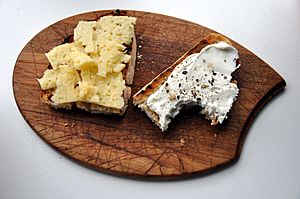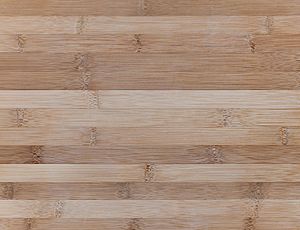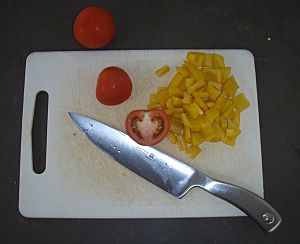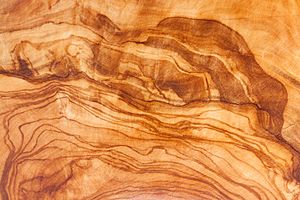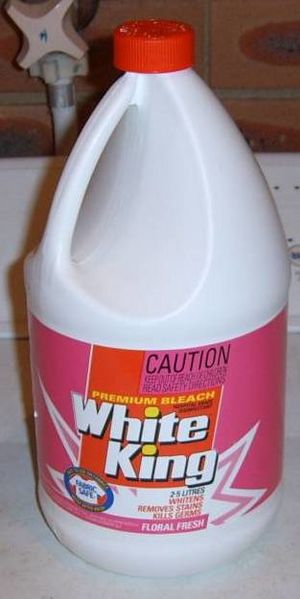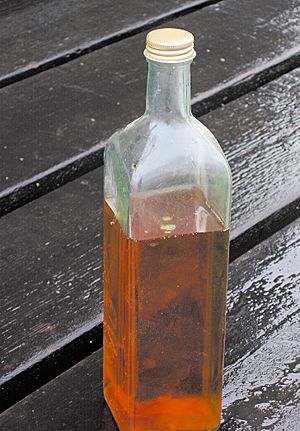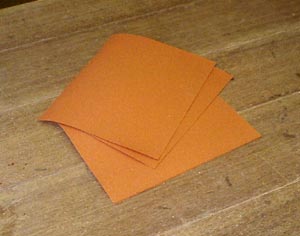Cutting board facts for kids
A cutting board is a strong board you use to cut things on. In the kitchen, people use cutting boards all the time to prepare food. Other types of cutting boards are used for cutting materials like leather or plastic. Kitchen cutting boards are often made from wood or plastic. They come in many different sizes and shapes.
Some cutting boards are also made from glass, steel, or marble. These are usually easier to clean than wood or plastic boards. However, they can make your knives dull because they are very hard. Knives with rough edges, like serrated knives, can wear down a cutting board faster than smooth knives.
What are Cutting Boards Made Of?
A knife's edge is delicate. It can get dull easily if you cut on a surface that is too rough. It can also chip if the surface is too hard. A good cutting board should be soft enough not to damage your knives. It should also be easy to clean and strong enough not to break easily. Hard cutting boards can still be useful for things that don't need a super sharp knife, like cutting cheese or making sandwiches.
Wooden Cutting Boards
Wood has some cool benefits. Small cuts in the wood can actually close up on their own, which helps the board last longer. Wood also has natural properties that help fight germs.
Hardwoods with tight grains and small pores are best for cutting boards. A tight grain means the wood is dense. This helps stop cuts from going too deep and keeps liquids and dirt from soaking in. For example, red oak is a hardwood, but it has large pores. This means dirt can get stuck in it even after washing, making it not ideal for cutting boards.
Teak wood is a great choice. It has tight grains and a nice natural color. Teak also contains natural oils that help keep out moisture, fungi, and germs. Wooden boards can be sanded down and re-oiled to look new again.
You need to take care of wooden boards. Use a special mineral oil that is safe for food to keep them from bending or cracking. Don't leave them sitting in puddles of water. It's best to let them dry standing up so air can get all around them. Be careful when choosing wood, especially tropical wood, as some types can have natural toxins or things that cause allergies.
Bamboo Cutting Boards
Bamboo cutting boards are a popular choice. Many people think bamboo naturally fights germs, though studies have different findings. To make a bamboo board, the bamboo stalks are cut into pieces. These pieces are then pressed together to form flat planks. Finally, many of these planks are glued together to create a cutting board.
Plastic Cutting Boards
Plastic cutting boards are often made from a material called polyethylene (PE). Unlike wood, plastic doesn't naturally fight germs. However, plastic boards can be washed with stronger cleaning products like bleach. This won't damage the board or leave chemicals behind to get into your food.
It's best not to use serrated knives on plastic boards. The sharper your knife is, the longer your plastic board will last. There are also thin, flexible plastic boards that make it easy to bend and pour chopped food into a pot or bowl.
Rubber Cutting Boards
Many restaurants are now using thick, solid rubber pads as cutting boards. They can be expensive, similar to good wooden boards. They can also be cleaned with strong chemicals. Rubber boards are very heavy, so they usually don't slip around. People who use them say they heal themselves well from cuts. They also protect knives like good plastic or wood boards and don't hold much moisture or germs.
Silicone Cutting Boards
Silicone boards are soft on your knife blades, just like rubber. They can also "self-heal" from cuts and help stop germs from growing, similar to wood. Silicone is also good because it can handle heat. Plus, it doesn't have the rubbery smell that some rubber boards might have.
Glass Cutting Boards
Glass cutting boards look easy to clean. But they can damage your knives because glass is very hard. Cutting on glass can quickly make knife edges dull, bent, or even chipped. If you chop hard on a glass board, it might even shatter or chip itself. This could put tiny pieces of glass into your food. Glass boards usually last about six years.
Steel Cutting Boards
Steel cutting boards are durable and easy to clean, just like glass. However, they also tend to damage knives. Depending on the type of steel, a steel cutting board will either make your knives dull quickly or chip and bend them, similar to glass.
Keeping Cutting Boards Clean
Keeping cutting boards clean is important because germs can hide in the cuts made by knives or in liquids left on the board.
Stopping Germs from Spreading
Germs or things that cause allergies can easily move from one part of the kitchen to another. They can spread through knives, hands, or surfaces like cutting boards. To help stop this, it's a good idea to use different cutting boards for different types of food. For example, use separate boards for raw meat, cooked meat, dairy products, and vegetables. Many professional kitchens use a color-coding system for their boards:
- Blue cutting boards: For raw seafood.
- Red cutting boards: For raw red meat.
- Green cutting boards: For vegetables and fruits.
- Yellow cutting boards: For poultry (like chicken or turkey).
- Brown cutting boards: For cooked meat.
- White cutting boards: For dairy and breads. These can also be used for anything if no other board is available.
How to Care for Your Boards
No matter what your cutting board is made of, it's important to clean it regularly. A very small amount of bleach mixed with water is good for cleaning and killing germs on cutting boards. To get rid of smells, you can rinse the board, then rub it with coarse salt. Let it sit for a few minutes, then wipe and rinse it clean. For wooden boards, this also helps smooth out small marks on the surface.
Caring for Wooden Boards
Never put wooden boards in a dishwasher or leave them soaking in water for a long time. This can damage the wood or the glue holding it together. To stop them from cracking, you should treat wooden cutting boards when they start to look dry. A good idea is to do this about 5 to 7 times a year, or whenever they need it. A light mineral oil that is safe for food is great for wooden boards. It helps stop water from soaking into the wood.
You can also use a special "drying oil" that is safe for food, like poppyseed oil, tung oil, or linseed oil. These oils dry much faster than regular oils. Most linseed and tung oils you buy in stores are not safe for food because they have metals that help them dry. It's usually not a good idea to use regular cooking oils like olive oil. They can go bad and make your board smell, which can then make your food taste bad.
If a wooden board has deep cuts, it needs to be smoothed out. These cuts can hide germs. You can easily smooth out wooden boards using tools like scrapers, planes, or even sandpaper.
Caring for Plastic Boards
Most plastic boards are not porous, which means germs can't get deep inside them. However, it's still very important to clean them well after every use. Germs can still grow in any small cuts or marks on the surface. Many plastic boards say they are safe for dishwashers. But, both home and professional plastic boards (especially HDPE plastic) can get bent or warped by hot water. This makes them unsafe to use.
If a plastic board has many deep cuts, it's best to replace it. These deep cuts can hide germs and mold. It's quite hard to smooth out a plastic cutting board once it's heavily cut.
Germs on Cutting Boards
Studies have looked at how germs grow on different cutting board materials. One study in 1994 found that wood might keep more germs, while another study in the same year found the opposite. In 2002, a study found that pine wood had properties that fought germs, but two other types of wood didn't reduce germs compared to plastic.
Even though pine has germ-fighting properties, it's not usually used for cutting boards because it's a "softwood" and gets cut easily.
In 2005, a study found that oak wood also had good germ-fighting properties, followed by pine. But oak is also not a common cutting board material because it has relatively large pores.
Another study in 2012 found that bamboo had strong germ-fighting activity compared to other woods.
Images for kids
See also
 In Spanish: Tabla de cortar para niños
In Spanish: Tabla de cortar para niños


